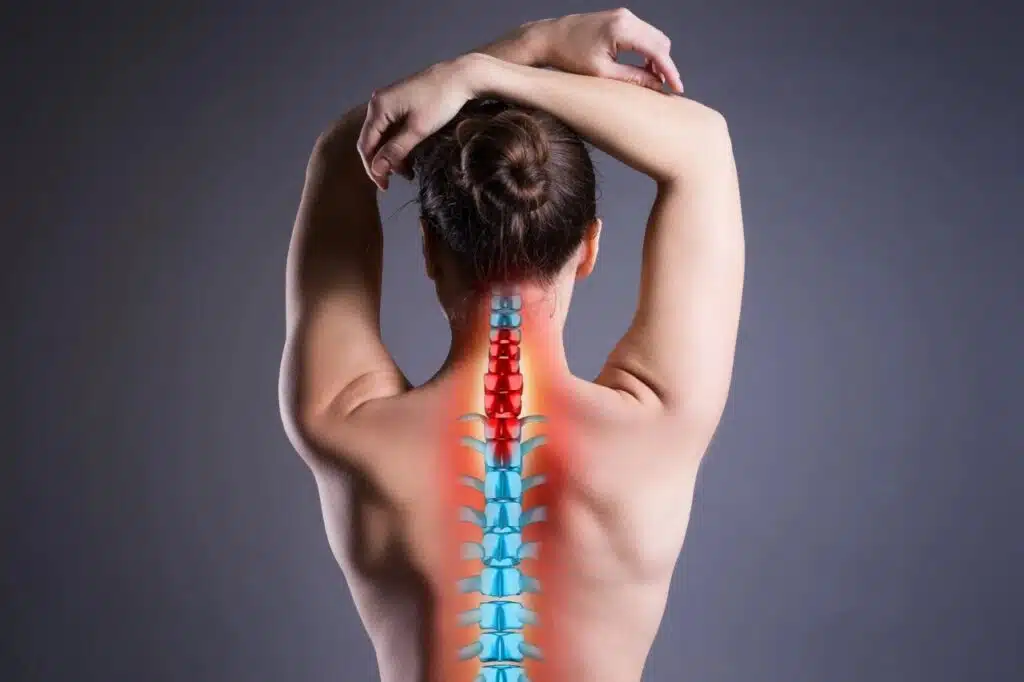Imagine a condition so prevalent that it affects millions worldwide yet so silent that many remain undiagnosed until a fracture occurs. This is the reality of osteoporosis, a skeletal disorder characterized by weakened bones, making them more prone to fractures. It is a condition that can significantly impact the quality of life, yet with early detection and proper management, its effects can be mitigated, and individuals can lead active and fulfilling lives.
Osteoporosis is often called the “silent thief” because it can progress unnoticed until a bone breaks. Although it is more commonly associated with postmenopausal women, it does not discriminate, affecting men and women of all races. Its stealthy nature underscores the importance of understanding risk factors and recognizing early signs and symptoms. This knowledge is our first line of defence, enabling us to take proactive steps toward diagnosis and management.
The importance of early detection cannot be overstated. Through timely intervention, individuals can slow the progression of the disease, reduce the risk of fractures, and maintain a higher quality of life. The journey to navigating osteoporosis begins with awareness and is sustained by comprehensive care and support. This guide aims to walk you through understanding the condition, from recognizing the early signs to living a healthy and active life post-diagnosis.
By demystifying osteoporosis, we empower ourselves to take control of our health. Let’s embark on this journey together, learning how to detect, manage, and thrive despite the challenges posed by osteoporosis.
Understanding Risk Factors and Symptoms
Osteoporosis may seem like a condition that strikes without warning, but it has identifiable risk factors and symptoms that can signal its onset. Understanding these can significantly aid in early detection and prevention. Let’s explore the common risk factors and how to recognize the early signs and symptoms of osteoporosis.
Common Risk Factors
Osteoporosis risk factors can be divided into two categories: those we cannot change, and those we can influence. Unchangeable risk factors include:
- Age: The risk of osteoporosis increases with age, particularly after age 50.
- Gender: Women are more likely to develop osteoporosis than men, especially postmenopausal women, due to a decrease in estrogen levels.
- Family History: A family history of osteoporosis or bone fractures can increase your risk.
- Body Frame Size: Individuals with smaller body frames tend to have a higher risk because they may have less bone mass to draw from as they age.
Modifiable risk factors include:
- Dietary Factors: Low calcium intake contributes to diminished bone density, early bone loss, and an increased risk of fractures.
- Physical Activity: A sedentary lifestyle can lead to weaker bones. Regular exercise is crucial in strengthening bones.
- Tobacco and Alcohol Use: Smoking and excessive alcohol consumption can weaken bones significantly.
Understanding these risk factors is crucial in evaluating one’s personal risk and taking steps to mitigate it.
Recognizing Early Signs and Symptoms
Osteoporosis is often called a silent disease because it can progress without any symptoms until a bone breaks. However, there can be signs and symptoms to watch out for, including:
- Loss of Height Over Time: A decrease in height can be a significant indicator of spine fractures due to osteoporosis.
- A Stooped Posture: Often referred to as a “dowager’s hump,” this can indicate spinal bone loss.
- Unexpected Bone Fractures: Fractures from minor falls or, in severe cases, from simple actions like bending over or coughing can be a red flag.
- Back Pain: Caused by fractured or collapsed vertebrae.
While these symptoms can also be associated with other health conditions, their presence warrants a conversation with a healthcare provider, especially if you have multiple risk factors for osteoporosis.
Understanding Risk Across Demographics
It’s important to note that while postmenopausal women are at the highest risk, men and younger women are not immune. Certain lifestyle choices and conditions can increase the risk across all demographics, highlighting the need for widespread awareness and preventative measures.
By recognizing these risk factors and symptoms early, individuals can seek timely medical advice and diagnostic testing. Early intervention is key to slowing the progression of osteoporosis, reducing the risk of severe fractures, and maintaining an active and healthy lifestyle.
Diagnostic Approaches
Early and accurate diagnosis of osteoporosis is pivotal for initiating the right treatment strategies. Diagnosis not only confirms the presence of the disease but also gauges its severity, helping tailor the most effective treatment plan. Let’s explore the essential diagnostic tests and the significance of medical history and physical examinations in diagnosing osteoporosis.
Essential Diagnostic Tests
The cornerstone of osteoporosis diagnosis is the bone density scan, or dual-energy x-ray absorptiometry (DEXA) scan. This non-invasive test measures bone mineral density (BMD) and compares it to the bone density expected for a young, healthy adult and people of the same age, gender, and size. Here are key points about DEXA scans:
- DEXA Scans: They are the most widely used and accurate method for diagnosing osteoporosis. They primarily focus on the hip and spine bones and can detect even small percentages of bone loss.
- T-Scores and Z-Scores: The results of a DEXA scan are presented as T-scores and Z-scores, which help determine your risk of fractures and diagnose osteoporosis.
In addition to bone density testing, your doctor might recommend other tests to rule out causes of bone loss or to assess your overall bone health, including:
- Blood and Urine Tests: These tests help identify underlying health conditions that might affect bone health, such as vitamin D deficiency or thyroid problems.
- X-rays: Used to detect bone fractures or a decrease in bone density.
The Role of Medical History and Physical Examination
A thorough medical history and physical examination are integral parts of the osteoporosis diagnostic process. During this evaluation, a healthcare provider will:
- Review Medical History: This includes discussing your family’s health history, any previous fractures, risk factors, and a review of medications that might affect bone health.
- Conduct a Physical Examination: The purpose is to assess your overall health, check for signs of recent or past fractures, and measure your height to detect any loss that may indicate spinal compression fractures.
Emerging Diagnostic Tools
Advancements in technology have led to the development of new diagnostic tools that offer more detailed insights into bone health. For example, high-resolution peripheral quantitative computed tomography (HR-pQCT) provides three-dimensional images of bones at a microscopic level, allowing for a more detailed assessment of bone quality and strength.
Personalized Diagnostic Approach
It’s important to remember that the diagnostic approach should be personalized, taking into account individual risk factors, medical history, and specific health concerns. This personalized approach ensures the most accurate diagnosis and the most effective treatment plan.

Treatment Options and Strategies
The treatment of osteoporosis is targeted at preventing fractures by stopping bone loss and increasing bone density. Given the condition’s variability from person to person, treatment plans are highly personalized. Here are the primary components of osteoporosis treatment:
Medications and Supplements
- Bisphosphonates: These are the most common medications prescribed for osteoporosis treatment. They work by slowing down the process that breaks down bone tissue, helping to maintain or increase bone density.
- Denosumab: This medication is a monoclonal antibody that helps slow bone loss and reduce the risk of fractures.
- Selective Estrogen Receptor Modulators (SERMs): These drugs mimic estrogen’s bone-protective effects, which is particularly beneficial for postmenopausal women.
- Calcium and Vitamin D Supplements: Adequate calcium and vitamin D levels are crucial for healthy bone density. Supplements may be recommended to ensure daily intake requirements are met, supporting bone health and enhancing the effectiveness of other osteoporosis treatments.
Physiotherapy and Chiropractic Care
- Physiotherapy: Tailored exercise programs designed by physical therapists can improve strength, balance, and flexibility, reducing the risk of falls and fractures.
- Chiropractic care: While direct treatment of osteoporosis is not the focus, chiropractic care can help manage pain and improve mobility for those with osteoporotic fractures under careful supervision.
Lifestyle Modifications and Dietary Recommendations
Lifestyle changes play a critical role in managing osteoporosis:
- Exercise: Weight-bearing and muscle-strengthening exercises can help build bone strength, while balance exercises can reduce the risk of falls.
- Diet: A diet rich in calcium and vitamin D is essential. Leafy green vegetables, dairy products, fish, and fortified foods contribute to bone health.
- Avoiding Tobacco and Excessive Alcohol: Smoking and heavy alcohol consumption can accelerate bone loss and should be avoided.
The Importance of Patient-Doctor Collaboration
Effective osteoporosis treatment relies heavily on the patient and doctor working closely together. This partnership allows for ongoing monitoring of the condition, adjustment of treatments as necessary, and ensures that the treatment plan fits the patient’s lifestyle and health needs.
Monitoring and Adjustment
Osteoporosis treatment requires regular monitoring through follow-up DEXA scans to assess the effectiveness of the treatment plan and make adjustments as needed. The initial bone density results and the specific treatment strategy employed determine the frequency of these scans.
The Role of Multi-disciplinary Clinics
In the management of chronic conditions such as osteoporosis, multi-disciplinary clinics stand out for their comprehensive and integrated approach to patient care. These clinics bring together specialists from various fields to offer a cohesive treatment experience, addressing the multifaceted needs of patients with complex health profiles.
Specialized Care and Tailored Treatment Plans
- Collaborative Team: Multi-disciplinary clinics feature a diverse team of healthcare professionals, including but not limited to endocrinologists, rheumatologists, orthopedists, physical therapists, and dietitians. This collaborative environment fosters the development of comprehensive treatment plans that address all aspects of a patient’s condition.
- Customized Treatment Approaches: Recognizing the unique nature of each patient’s condition and lifestyle, these clinics provide customized treatment plans. This bespoke approach ensures that care is not only effective but also aligns with the patient’s individual health goals and daily life.
Integrative Approaches to Management
- Comprehensive Care: Beyond the physical treatment of osteoporosis, multi-disciplinary clinics often incorporate services aimed at supporting the patient’s mental and emotional well-being, such as counselling and support groups. This comprehensive care model acknowledges the interconnectedness of physical health with psychological and emotional factors.
- Access to Cutting-edge Therapies: Patients at multi-disciplinary clinics benefit from the latest medical treatment and rehabilitation techniques advancements. These clinics are typically more connected with ongoing research, offering patients access to innovative treatments and clinical trials.
Benefits of Multi-disciplinary Clinics
- Coordinated Care: The collaborative nature of these clinics ensures that all aspects of a patient’s health are considered, leading to more coherent and synchronized treatment plans.
- Comprehensive Support: From the initial diagnosis to ongoing management, patients have access to a wide range of services and support systems designed to improve their overall health and quality of life.
- Educational Resources: Multi-disciplinary clinics often place a strong emphasis on patient education, providing resources and workshops on disease management, nutrition, exercise, and lifestyle modifications.
- Advanced Treatment Options: The collaborative research and clinical trial opportunities available through these clinics can offer patients access to the most current and effective treatment options.
Selecting the Right Multi-disciplinary Clinic
When choosing a multi-disciplinary clinic for osteoporosis care, it’s important to consider the expertise of the team, the comprehensiveness of services offered, and the clinic’s approach to patient-centered care. Looking for a clinic that values patient education and community support can also greatly enhance the treatment experience and outcomes.
Living with Osteoporosis
Living with osteoporosis doesn’t mean you have to drastically alter your lifestyle or give up the activities you love. You can lead a healthy, active life with careful management and the right strategies. Here are some practical tips and techniques.
Practical Advice for Daily Life Adjustments
- Maintain a Balanced Diet: Ensure your diet is rich in calcium and vitamin D to support bone health. Foods like dairy products, leafy greens, and fish can be great sources. Your healthcare provider might also recommend supplements.
- Stay Active: Engage in regular exercise tailored to your condition. Weight-bearing exercises, such as walking or low-impact aerobics, and muscle-strengthening exercises can help maintain bone density. Balance exercises are also crucial to reduce the risk of falls.
- Create a Safe Living Environment: Minimize the risk of falls at home by removing trip hazards, improving lighting, and installing grab bars in critical areas like the bathroom.
- Monitor Medication Side Effects: Some medications for osteoporosis can have side effects. Stay in close communication with your healthcare provider to manage these effectively.
Strategies for Preventing Fractures and Injuries
- Wear Proper Footwear: Choose shoes with good support and slip-resistant soles to reduce the risk of falling.
- Avoid Risky Activities: Be cautious with activities that have a high risk of falls. Seek alternatives that are safer yet enjoyable.
- Regular Health Check-ups: Keep up with regular appointments with your healthcare provider to monitor your bone health and adjust your treatment plan as necessary.
- Education on Proper Techniques: Learn the correct way to bend and lift objects to avoid stress on your bones.
Living with osteoporosis involves adjustments and a commitment to managing your health, but it doesn’t have to limit your life. With the right strategies and support, you can continue to enjoy many activities and maintain a high quality of life. Remember, you are not alone—many resources and communities are ready to support you on your journey.
Conclusion and Key Takeaways
- Early Detection and Management: Understanding the risk factors and recognizing the early signs and symptoms of osteoporosis are crucial for early detection and effective management of the condition.
- Comprehensive Diagnostic Approaches: Utilizing both traditional diagnostic methods and emerging tools ensures a precise diagnosis, allowing for a personalized treatment plan.
- Multifaceted Treatment Strategies: Effective treatment combines medications, lifestyle modifications, and possibly physical therapy or chiropractic care, emphasizing the importance of a tailored approach.
- The Role of Multi-disciplinary Clinics: Specialized clinics offer a comprehensive and integrated approach to treatment, providing access to a team of experts and the latest in osteoporosis care.
- Living with Osteoporosis: Adopting practical lifestyle adjustments and preventive strategies can significantly reduce the risk of fractures and support a healthy, active life.
- Community and Support: Drawing inspiration from real-life stories and connecting with support groups can provide motivation and practical advice for managing osteoporosis.
Reputable Resources
National Osteoporosis Foundation (NOF)
- Website: nof.org
- What You’ll Find: Comprehensive information on osteoporosis, including prevention, treatment, and lifestyle tips. The NOF also offers educational materials, support group listings, and updates on the latest research.
International Osteoporosis Foundation (IOF)
- Website: iofbonehealth.org
- What You’ll Find: Global information on bone health, including risk assessment tools, patient stories, and guidelines for clinical practice. IOF also promotes worldwide awareness campaigns.
The Bone Health and Osteoporosis Foundation (BHOF)
- Website: bonehealthandosteoporosis.org
- What You’ll Find: Resources for patients and healthcare providers, including information on bone density testing, treatment options, and ways to advocate for bone health.
Osteoporosis Canada
- Website: osteoporosis.ca
- What You’ll Find: Targeted resources for Canadians, including educational tools, guidance on living with osteoporosis, and a directory of local clinics and support services.






0 Comments